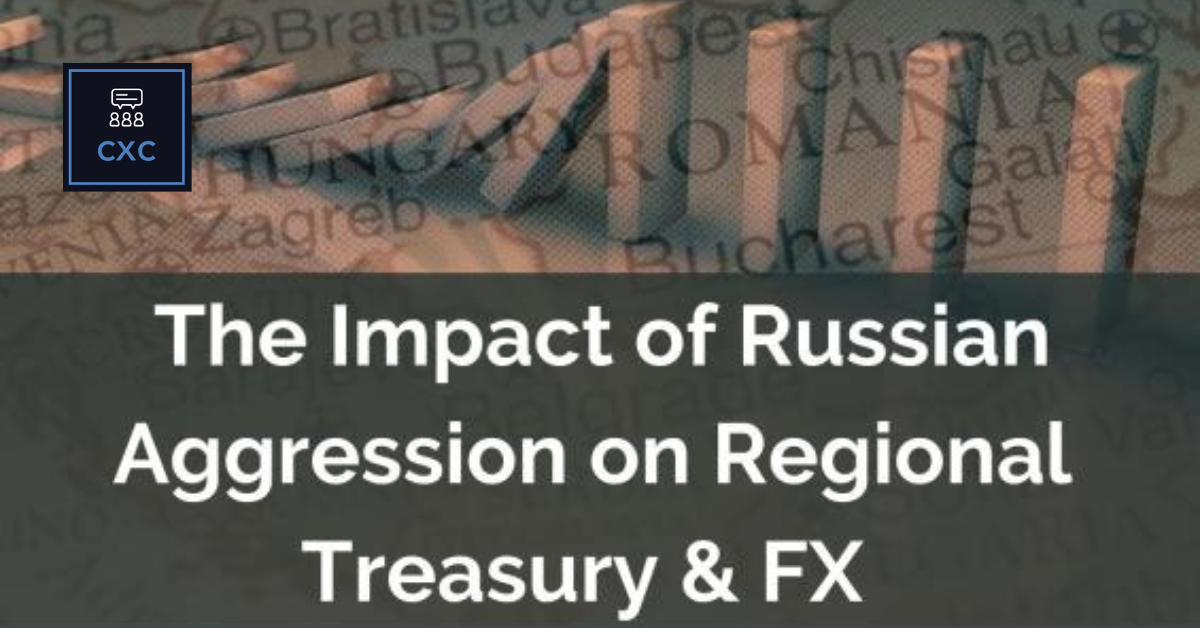Corporate Treasury Technology Roadmaps
25-09-2023 | Technology is changing the way many businesses work: with online commerce, many traditionally B2B businesses are moving to B2C
25-09-2023 | Technology is changing the way many businesses work: with online commerce, many traditionally B2B businesses are moving to B2C
17-07-2023 | “No man is an island”. The phrase comes from the 17th century English poet, John Donne (it has since been used in a popular song….). Nowhere is this truer than in a modern enterprise.
03-07-2023 | Risk management. Every treasurer includes this as part of their job description, and we are rightly proud of what we do in this area. But, every now and again, we get a reality check. How good are our processes?
12-06-2023 | How corporate treasurers are using AI and Robotics – a detailed report produced by ComplexCountries
23-05-2023 | All international companies put a lot of effort into avoiding having cash trapped in emerging countries.
10-05-2023 | FX and currency hedging are complex topics, which generate a lot of discussion in most companies. We held this session to see whether members are changing their hedging strategies in response to the recent increase in currency volatility, coming after a period of (relative) stability.
17-04-2023 | At CompleXCountries, it is our mission to provide a forum where treasurers can openly discuss issues and share experiences. We then publish the essence of the discussion, but in a format that respects the need for confidentiality – though it is valuable general information, there is no upside to telling the whole world your specific company has had a problem with Bank A, or that you find country B’s exchange control regulations difficult to handle.
02-02-2023 | treasuryXL | ComplexCountries | LinkedIn |
This call took place five days after FTX filed for bankruptcy. However our discussion did not dwell on crypto as an investment (We haven’t found a treasurer who would). The interest for treasurers is to help their companies understand the business opportunities of the metaverse, and that isn’t going away.

According to Gartner,’ [https://www.gartner.com/en/articles/what-is-a-metaverse] by 2026, 25% of people will spend at least one hour per day in a metaverse for work, shopping, education, social media and/or entertainment’, and…’A metaverse is not device-independent, nor owned by a single vendor. It is an independent virtual economy, enabled by digital currencies and non-fungible tokens (NFTs).’
So it’s no surprise that many companies are developing strategies to capitalise on what could be a massive business opportunity. Participants in this call comprised treasurers representing companies at different stages of this journey, all facing the challenge that the regulatory and financial infrastructure available is at an early stage of evolution.
Crypto has clearly not gone away for corporate treasurers and I’m certain we’ll see further uses going forward. There is a huge amount of detail in this report, which is essential reading for any treasurer wishing to understand the challenges or benchmark their processes.
26-01-2023 | treasuryXL | ComplexCountries | LinkedIn |
ComplexCountries reports detail how corporate treasurers approach challenges in complex countries, across associated treasury processes and how they adapt to economic and regulatory changes.

Their reports cover a wide range of topics associated with treasury processes in these countries, and how they are impacted by economic and regulatory changes. This includes how corporate treasurers approach currency risk management, compliance with local regulations, and maintaining cash and liquidity in the face of political and economic instability. The goal is to help treasurers navigate these challenges and protect their company’s financial position.
Find below some of the free reports detailing complex country challenges for treasurers
13-12-2022 | treasuryXL | ComplexCountries | LinkedIn |
This call was held at a point in the conflict where Ukraine had made serious inroads into Russian held territory, and there was a lot of talk about the potential use by Russia of nuclear weapons. So, one of the questions was whether treasurers are expecting a nuclear escalation, a spread of the conflict, and what to do to prepare for it.

None of these concerns were mentioned. For most companies, the business in the countries surrounding Russia and Ukraine is minimal. The bigger concern is, and remains, the impact on the business outlook in the rest of the world, the impact of increasing interest rates, inflation, and logistics issues – though logistics seem to be improving.
Instead, most participants continue to do business in Russia – mostly because they are in industries that benefit from the health and humanitarian exceptions to sanctions. In other cases, the business is essentially local, but uses the corporate brand – this means care must be taken when withdrawing. Having an exception from sanctions still leaves issues:
Despite this, our participants found it is generally possible to make payments into and out of Russia, even if the process can take a long time. Banks are moving to close offshore rouble accounts, especially in London, but they are being flexible over deadlines. Dividends are definitely not allowed, but most other types of payment seem to be possible. While some participants continue to move towards the exit – protecting local employees remains a priority – other are finding that their business in Russia is doing surprisingly well.
In terms of banking, everyone seemed to be using Citi [this discussion took place before Citi announced their withdrawal from Russia – from March 2023], though most were opening accounts with Raiffeisen as a backup. This is a return to the Communist era, when Raiffeisen was the main conduit for payments to and from Russia.
Bottom line: for our treasurers, the main concern is slowing economic growth in the west, increasing energy prices, higher interest rate and inflation. This is impacting their main business, which is typically not in Eastern Europe. As for Russia itself, people continue to move towards the exit – but those who have to stay, for mostly humanitarian reasons, are finding that business is complicated – but it continues.